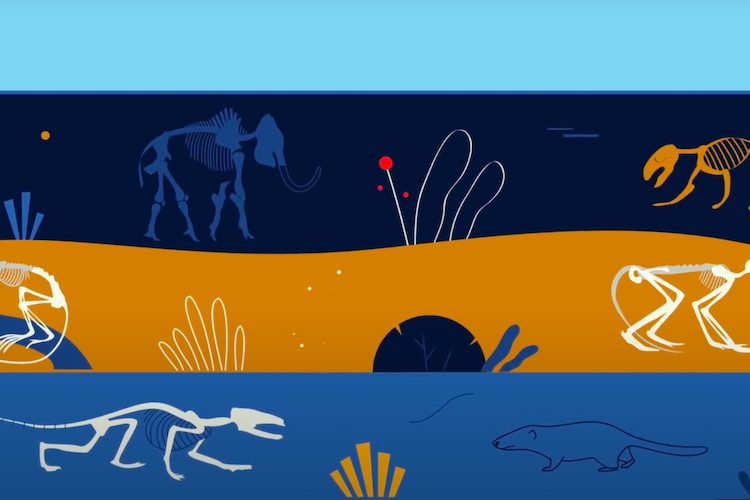Mechanisms of Antioxidants’ Functions
Biologist Angelo Azzi on the internal balance of oxidants and antioxidants, free radicals, and polyphenols

In February 2015 Nature Communications published a paper Hippos stem from the longest sequence of terrestrial cetartiodactyl evolution in Africa describing new insights into the origin of hippopotamus. We have asked the leading author of this research, Prof. Fabrice Lihoreau from Montpellier 2 University, to comment on this work.
We described a new species of herbivorous mammal discovered in the Turkana basin, northern Kenya, represented by dental material (incisors, premolars and molars). This new taxon is named Epirigenys lokonensis (from Epiri, hippopotamus in Turkana language, and Lokone, the place of discovery). We analyze these teeth based on their careful description and on comparisons with teeth of other representatives of the order Cetartiodactyla (that include notably whales, dolphins, cows, pigs and deers). We used two analytical methods named cladistic analysis and maximum likelyhood to compare 42 fossil taxa based on 148 descriptive dental characters.
This allows us to propose new scenario on the origin of hippos. First they stem in an Asian anthracothere group dated from 40 million years old, then they invaded Africa 35 million years ago and evolved independently in Africa into what we know as the modern hippos.
This discovery considerably fills the gap in hippo evolutionary history and indicates us new efforts to do in order to find the common ancestor between Cetacean and hippo (scenario only supported nowadays by DNA analysis).
The first fossil (a fragment of mandible) was found in 1994 by a Kenyan team. The specimen was then stored in the National Museum of Kenya in Nairobi. During a workshop of hippo specialists that took place in that Museum in 2005, we found this mandible and already knew that it was what we were looking for as it presents a mosaic of anthracothere features and hippo innovations. But the sample was too small to manage a robust analysis. We therefore get three times in the field (2007, 2009, 2011), at the same locality where that Kenyan team was twenty years ago and found more fossils of this mammal.
Our main topic is that Hippo evolutionary history was mysterious for several reasons:
1) Hippo have a quasi-unique ecology as they are large herbivorous that spend most of their time in water but that feed on the ground. Nowadays, few mammals present this ecology: the beaver and the capybara. Its very unique dental morphology explains that it is difficult to compare it with other mammals.
2) Hippo evolutionary history was thought to be less spectacular than its sister group history : the cetaceans. Moreover the fossiliferous sediments where we can find the origin of hippos are lacustrine or riverine ones which are rare (notably in Africa) and scarcer than marine sediments.
3) The phylogenetic relationships between cetaceans and hippos were first proposed on the base of molecular data (DNA notably). The difficulty to understand the relationships proposed by molecular phylogeny between hippos and cetaceans is linked to the high degree of morphological specialization in both groups. Paleontologists and at a larger scale, anatomists were very skeptical about it.
In this context, deciphering of the evolutionary history of hippos becomes a challenge because we have to consider a huge degree of evolution that was not registered in the fossil record. Indeed, part of this problem is that we do not recognize close relative of hippos despite we have them in our collections (anthracothere) and that the important period of diversification of this lineage took place during a period for which we do not have fossiliferous sediments.
The Lokone hill locality is therefore an original window on this period (28 Myrs old) and Epirigenys is the fossil that we need to reconstruct the whole history.
Still 13 million years of gap in hippo evolutionary exist to understand the divergence with the cetaceans. Indeed the earliest anthracothere is 40 Ma and the earliest cetacean is 53 Ma. But what is exiting is that both group of mammals originate in south Asia. Therefore we now know that the next step is to find the origin of anthracothere In Asia prior to 40 Ma and to intend to recognize the common ancestor between cetaceans and hippos.
Hippopotamus and cetaceans are both mammals that live in water, therefore we can question if this ability is a shared characteristics of cetaceans and hippopotamus or if it appeared independently in both groups. This question is important as it can describe profound homologies that we can explore notably in the genome. Therefore, the second aim of our research will be to characterize the ability in anthracothere to specialize to aquatic lifestyle. This needs a multidisciplinary approach gathering geochemistry, morphofunctional anatomy and paleoenvironmental studies. Understanding paleoecology of this group of mammals will also help us to identify the common ancestor between hippos and cetaceans.

Biologist Angelo Azzi on the internal balance of oxidants and antioxidants, free radicals, and polyphenols

Psychologist Helen Tager-Flusberg on theory of mind, comorbidity, and symptoms of autism

Professor of Biosphere and Climate Impacts Iain Colin Prentice on CO2 concentration in nature, photosynthetic ...